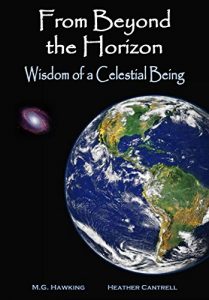I 99eBooks è una directory di eBook. Cerchiamo e classificato intorno alle eBooks Web per te!
Tutti i diritti riservati. I libri e libri elettronici sono di proprietà dei rispettivi proprietari.
From Beyond the Horizon, Wisdom of a Celestial Being (English Edition)
While deep in the Great Range of the Himalaya, the author and his companions experienced three encounters with what they believe were the true Ri-iha-mo, the “celestials” of ancient legend. Experience these extraordinary encounters and explore the profound knowledge they revealed.
Throughout the Himalayan regions of Asia, there have endured remarkable accounts of “celestial beings” who, having arrived in an antediluvian era of prehistory, still dwell in a concealed inner region of the vast wilderness of the Himalayas.
Are these ubiquitous legends merely myths? Or are they representative of some vaguely remembered reality passed down through generations beyond count? Absent an ember, there can be no smoke; there is a kernel of truth in all such ancient legends and, in light of today’s astronomical knowledge, they cannot be easily, or wisely, dismissed.
Recent analysis of data from the Hubble Space Telescope’s Deep Field survey has revealed that, rather than the previously estimated 200 billion galaxies in the observable universe, there are likely more than two trillion galaxies (Science Daily, 13 October 2016).
To put this in some kind of perspective, if you hold a single grain of sand at arm’s length against the night sky, the tiny patch of sky it hides contains more than 100,000 galaxies—not 100,000 stars, 100,000 galaxies. These range in size from dwarf galaxies with a few billion stars to giant galaxies with 100 trillion stars.
The incomprehensible immensity of our universe inspires a deep sense of awe—and inspires as well many questions. What’s really out there? Is there life anywhere else? Clearly, the number of stars in our universe is beyond the mind of man to number, but what about planets?
As of late 2016, NASA has verified the existence of 3414 exoplanets, that is, planets orbiting other stars in our Milky Way galaxy. “It’s very exciting,” said NASA’s Dr. William Kinney. “It opens up the universe. Now we know that we’re just one of billions and billions of small worlds that are very much like ours. If you extrapolate that to our galaxy as a whole, the calculation based on the Kepler data is that there are around 40 billion planets like earth.”
The 40 billion planets “like earth” is the number calculated to be in our galaxy alone, and the Milky Way is only one of the estimated two trillion or so galaxies. This makes a rough estimate of the number of planets in the known universe to be 80 sextillion (an 8 with 22 zeros behind it). To offer a frame of reference for that number, picture all the grains of sand on every beach on earth, multiply that picture by 16, and you may get an impression of how many planets are out there.
Transcribed directly from the journals of explorer M.G. Hawking’s five years in the Himalayan regions of Nepal and Tibet, this book contains detailed narratives of the encounters and conversations the author and his companions had with the actual Ri-iha-mo, the legendary Himalayan “mountain goddesses,” as the Tibetan term translates. During their second and third encounters, the Ri-iha-mo disclosed profound revelations about our universe, our planet, and our true nature, wisdom that can greatly assist in understanding ourselves, our world, and our role and power in creating precisely the life we desire.
An incomparable book for anyone interested in greatly expanding their knowledge and personal power, and deeply rewarding for those fascinated with the endless ancient accounts of extraterrestrial influences. New Release, Kindle page count 173 (estimated). For more information, please see the ‘Look Inside’ feature on this page. Thank you.
Library-Cataloging-Data: extraterrestrial influences, Himalayan celestials, Ri-iha-mo, aliens, goddesses, star people, star beings, metaphysical, visualization, ancient legends, ancient mysteries


















